
Pseudocoremia is a genus of moths in the family Geometridae erected by Arthur Gardiner Butler in 1877. This genus is endemic to New Zealand.
Crypsitricha is a genus of moths belonging to the family Tineidae. It was first described by Edward Meyrick in 1915.
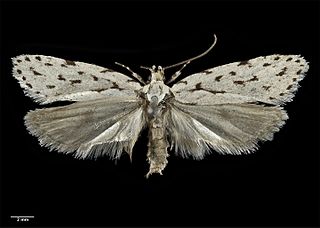
Izatha heroica is a moth of the family Oecophoridae. It is endemic to New Zealand, where it is widespread in the west part of the South Island. It has been collected in southern beech forests but larvae have been reared on dead kanuka or manuka bushes.

Scoparia caesia is a moth of the family Crambidae. It is endemic to New Zealand.
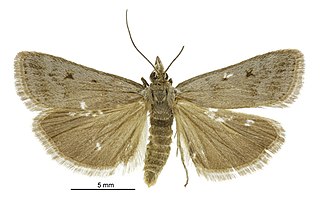
Scoparia cinefacta is a species of moth in the family Crambidae. It is endemic to New Zealand.
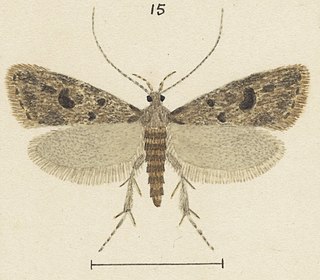
Gymnobathra ambigua is a species of moth in the family Oecophoridae. It is endemic to New Zealand. This species has been classified as critically endangered by the Department of Conservation.

Archyala opulenta is a species of moth of the family Tineidae. This species is endemic to New Zealand has been found in the upper Maitai Valley in Nelson as well as in Northland. The larvae of this species are associated with endemic bat species as they feed on the guano of Mystacinidae. The adult moths are on the wing in November. It is classified as "Data Deficient" under the New Zealand Threat Classification System by the Department of Conservation.

Heterocrossa is a genus of moths in the Carposinidae family. It is endemic to New Zealand. This genus was previously regarded as a synonym of the genus Carposina. However Elwood C. Zimmerman in Insects of Hawaii removed Heterocrossa from synonymy with Carposina. Zimmerman argued that as the genitalia of Heterocrossa and Carposina are distinct, Heterocrossa should not be regarded as a synonym of Carposina. This was agreed with by John S. Dugdale in his annotated catalogue of New Zealand lepidoptera.

Orocrambus ornatus is a moth in the family Crambidae. This species is endemic to New Zealand. It is classified as critically endangered by the Department of Conservation.

Pseudocoremia fluminea is a species of moth in the family Geometridae. It is endemic to New Zealand. It is classified as Not Threatened by the Department of Conservation.

Crypsitricha agriopa is a species of moth in the family Tineidae. It was described by Edward Meyrick in 1888. This species is endemic to New Zealand.
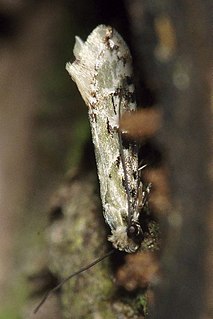
Crypsitricha mesotypa is a species of moth in the family Tineidae. It was described by Edward Meyrick in 1888. This species is endemic to New Zealand.

Crypsitricha pharotoma is a species of moth in the family Tineidae. It was described by Edward Meyrick in 1888. This species is endemic to New Zealand.

Crypsitricha roseata is a species of moth in the family Tineidae. It was described by Edward Meyrick in 1913. This species is endemic to New Zealand. The type locality of this species is the suburb of Wadestown, in Wellington.

Crypsitricha roseata is a species of moth in the family Tineidae. It was described by Edward Meyrick in 1914. This species is endemic to New Zealand.
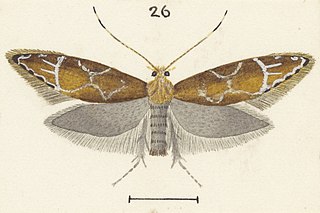
Dryadaula castanea is a species of moth in the family Tineidae. It was described by Alfred Philpott in 1915. This species is endemic to New Zealand.

Sagephora jocularis is a species of moth in the family Tineidae. It was described by Alfred Philpott in 1926. This species is endemic to New Zealand and has been collected in Canterbury and Southland. Adults are on the wing in January and October.

Cnephasia paterna is a species of moth in the family Tortricidae. It is endemic to New Zealand. This species is classified as Nationally Endangered by the Department of Conservation.

Tingena is a genus of the concealer moth family (Oecophoridae). This genus is endemic to New Zealand.



















